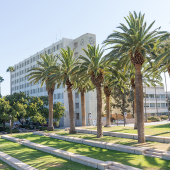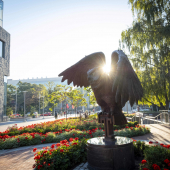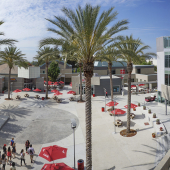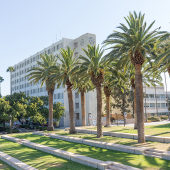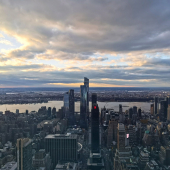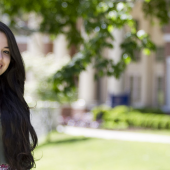Finding permanent or temporary residence in a foreign country can be a troublesome affair. Allow us to detail one of the more complicated elements about living in the United States: the visa.
If you do not own an American passport, in order to enter the US, you will require a US visa which is then printed, stamped or attached to your own passport. Generally, a citizen foreign to the United States must first obtain a visa, either temporary or permanent, before they arrive.
You must have a student visa to study in the United States.
For more information about what form of visa you require, make use of the United States Government website, especially its useful Visa Wizard.
Type of Visa
Student Visas
If you wish to study in the United States, you will require a student visa.
- An F-1 visa is for academic or language studies
- M-1 is for non-academic or vocational studies
- A J-1 visa is for exchange students, some summer work programs and other approved programs
- A B visa is for short-term business or tourism, though may be applicable if your course does not lead to a degree or academic certificate
Business/Employment Visas
- A B visa can be used for short-term business trips
- Temporary Employment Visas, of which there are many (depending on the form of work) are further detailed on the US Government’s travel site.
Tourism & Visit Visas
- The B visa, as mentioned above, is a short-term visa for the purpose of tourism, business, or a combination of the two
- The Visa Waiver Program, allows you to remain in the US for tourism, business or transit for up to 90 days if you have nationality from one of the following countries:
-All European Union citizens (except Bulgaria, Croatia, Cyprus, Poland and Romania)
-Andorra
-Australia
-Brunei
-Chile
-Iceland
-Japan
-Liechtenstein
-Monaco
-New Zealand
-Norway
-San Marino
-Singapore
-South Korea
-Switzerland
-Taiwan
Details on F-1 and M-1 Visas
For now, we will focus on the primary visas needed for international study, the F and M visas. The more common of the two is the F-1 visa, which you will need if you attend:
- University or college
- High School
- Private elementary school
- Seminary
- Conservatory
- Another academic institution, including a language training program
The M-1 visa is for vocational or other recognised non-academic institutions, other than language training programs.
If you are travelling as part of the Visa Waiver Program or on a visitor (B) visa, you will not be granted legal access to study; you must have an F or M visa to study.
Before you can apply for an F or M visa, you must first apply and be accepted to an approved school. You can find a full list of approved schools here.
Once you have been accepted, you will be enrolled in the Student and Exchange Visitor Information System (SEVIS), for which you will have to pay a fee and fill out an I-20 form.
Once that has been completed, you can then apply for a visa. Please note that different embassies and consulates have different requirements, so contact them first at this stage. There is a list to be found here.
You will likely have to fill out the Online Nonimmigrant Visa Application (DS-160) and schedule an interview. Make sure you apply as far in advance as possible, as it is likely that it will take time for the consulate/embassy to process your application.
In preparation for your interview you will have to pay a fee ($160USD), as well as bring the following documentation:
- Your valid passport
- The confirmation page for your Nonimmigrant Visa Application (DS-160)
- Application fee receipt
- Photo (requirements here)
- Evidence of your enrolment to SEVIS (e.g. certificate, form I-20)
- Other additional documentation (may include degrees, certificates, test scores, evidence of how you will pay living and travel costs)
After all that work and as long as your interview goes well, you should have access to a student visa for the duration of your course. Congratulations! Now work as hard as you can before potentially attempting to gain a work visa, or even permanent immigrant status.
Once again, we advise all readers who are attempting to apply for a U.S. visa to read through the U.S. Government’s website on the matter, available here.
